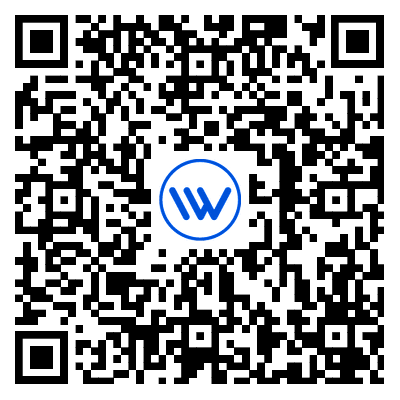How to replace SolarWinds to ensure enterprise IT security?
Introduction: The SolarWinds incident sounded the alarm for localization
In 2020, the SolarWinds supply chain attack shocked the world – hackers tampered with its Orion network management software and implanted backdoors into 18000 companies worldwide, including core agencies such as the US Treasury Department and the Department of Homeland Security. This incident not only exposed the security risks of foreign software, but also revealed the deep dependence risk of critical infrastructure on foreign technology. In this context, LeWei Network Management, with its core advantages of lightweight, intelligence, and localization, has become an ideal choice to replace foreign systems such as SolarWinds.
1、 SolarWinds’ Achilles’ heel: Deep dilemma of network management system
1. Security risk: Uncontrollable “backdoor” threat
Normalization of supply chain attacks: The SolarWinds incident proves that foreign software may become a springboard for national level hackers, posing a challenge to corporate data sovereignty.
Data sovereignty compliance: In key industries such as finance, government, and energy, the use of foreign systems may violate regulations such as the Cybersecurity Review Measures, leading to compliance risks.
2. Cost and Efficiency: High “Hidden Costs”
Authorization and maintenance costs: SolarWinds and other systems are charged based on the number of devices, and costs surge as the enterprise expands; Upgrades and technical support rely on foreign teams, with long response cycles.
Functional rigidity: Foreign systems mostly rely on standardized products, which are difficult to adapt to complex requirements such as mixed devices from multiple manufacturers and cloud native environments in domestic enterprises.
2、 Alternative ‘disruptors’
1. Localization of core technology of Lewei network management: Building a strong security defense line
Full stack localization support:
Compatible with domestic operating systems such as Kirin and Tongxin, supporting domestic chips such as Kunpeng, Feiteng, and Loongson, completely independent of foreign technology dependence.
By obtaining Level 3 certification for Level 2 insurance, we meet the compliance requirements of industries such as government and finance.
Zero trust security architecture:
Built in AI threat detection engine, real-time monitoring of abnormal traffic and configuration changes to prevent supply chain attacks from infiltrating.
2. Lightweight and Intelligent: Breaking the Cost and Efficiency Dilemma
Lightweight deployment:
5-minute deployment, supports monitoring of thousands of devices, reduces resource usage by more than 50%, suitable for small and medium-sized enterprises to quickly implement.
Provide a subscription model, pay as you go, and reduce initial investment costs.
AI driven intelligent operation and maintenance:
Alarm noise reduction: Filter over 90% of invalid alarms through machine learning and focus on core faults.
Root cause analysis: Automatically associate device logs and topology relationships, recommend fault solutions, and reduce MTTR (Mean Time to Repair) by 60%.
Automated scripting: Supports Python/Shell script orchestration, enabling high-frequency operations such as batch device configuration distribution and automatic service restart.
3. Open ecology and multi cloud adaptation: embracing technological changes
Multi vendor compatibility:
Compatible with Huawei through SNMP, NetFlow, Telemetry and other protocols H3C、 Cisco and other mainstream manufacturers provide equipment to solve the problem of mixed network management.
Cloud native support:
Provide Kubernetes cluster monitoring plugin, real-time tracking of Pod and Node status, supporting unified management of containerized applications and physical networks.
Open API and Ecological Integration:
Provide RESTful API interfaces that can seamlessly integrate with enterprise WeChat, DingTalk, Jira, and other tools to achieve automated alert push and work order flow.
3、 Alternative Practice Path to SolarWinds
1. Requirement matching: from “universal substitution” to “precise adaptation”
Scenario based solution:
Small and medium-sized enterprises: Choose LeWei Network Management Basic Edition to quickly achieve device monitoring and alarm management, with a cost only one-third of SolarWinds.
Medium to large enterprises: Deploy LeWei Network Management Enterprise Edition, combining private deployment and customized development to meet the needs of complex network topologies and multi cloud management.
2. Migration strategy: “three-step” smooth transition
Step 1: Pilot verification:
Deploy LeWei network management to verify functionality, performance, and compatibility.
Step 2: Data Migration:
Import equipment inventory, historical alarms, and other data from SolarWinds into the LeWei network management system through automated tools to ensure business continuity.
Step 3: Comprehensive replacement:
Gradually shut down the SolarWinds system and establish the operation and maintenance process of the LeWei network management system (such as alarm response SOP, configuration backup strategy).
4、 Future outlook: The ‘second half’ of localization substitution
With the maturity of the information and innovation industry, domestic substitution has moved from being “usable” to being “easy to use”. Domestic platforms such as Lewei Network Management need to continuously strengthen the following capabilities:
Deep application of AI: By optimizing alarm analysis and fault prediction through large models, we aim to enhance the level of intelligent operation and maintenance.
Industry customization: Launching scenario based solutions for vertical fields such as finance, healthcare, and education.
Ecological Co construction: Deeply cooperate with domestic chip, operating system, and cloud platform manufacturers to build an independent and controllable technology ecosystem.
The Rise of Domestic Network Management from “Substitution” to “Leadership”
The SolarWinds incident sounded the alarm for enterprises, while the rise of domestic platforms such as Lerwee Network Management provided Chinese companies with secure, efficient, and low-cost alternative solutions. In the wave of domestic substitution, enterprises need to take “safety and controllability” as the bottom line, “cost reduction and efficiency improvement” as the goal, and “technological innovation” as the driving force, and choose a domestic platform that truly suits their own needs. In the future, domestic network management will not only replace foreign systems, but also lead the evolution direction of global network management technology.
- How IT Monitoring Systems Reduce Suspicious Activity Rates for Enterprises
- Essential O&M Tools! OS Monitoring Explained
- Fully open all functions | Lerwee O&M intelligent agent free version out now
- 重磅 | 乐维自研采集平台Perseus正式发布
- Lerwee Encyclopedia: What’s IT Monitoring? Why Monitor in O&M?
- Lerwee NMS vs. Solarwinds NPM Network Performance Monitoring (Part 3)

